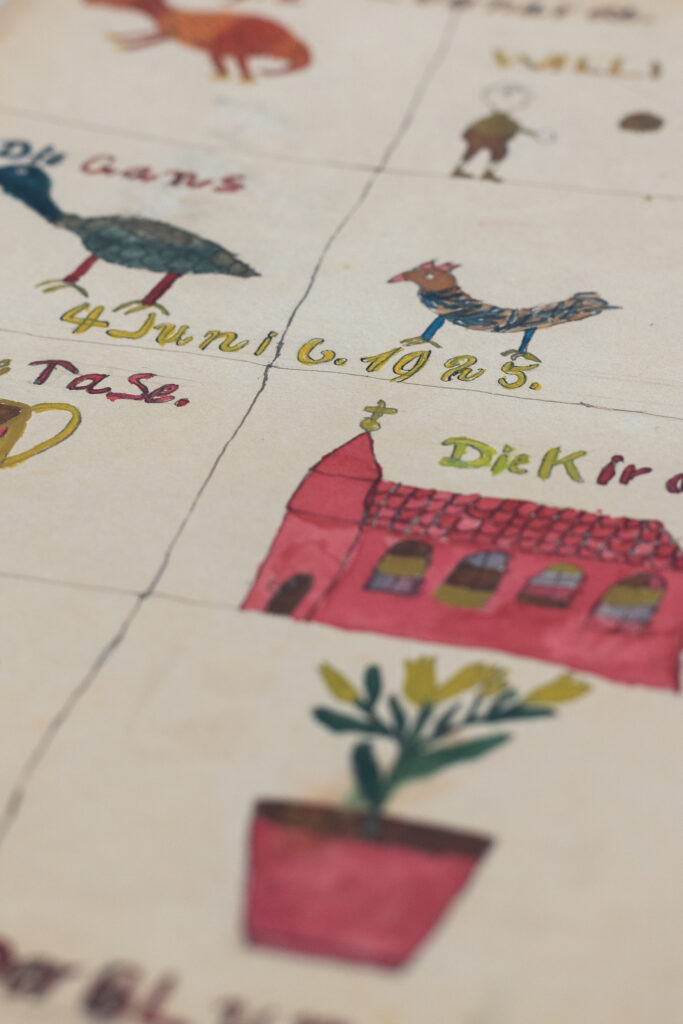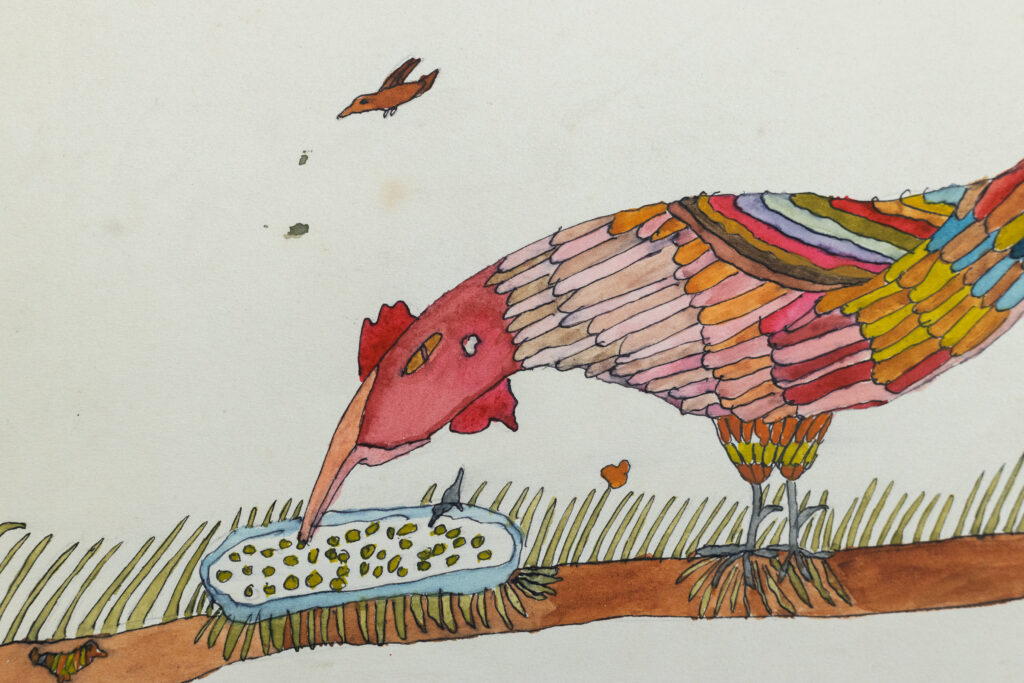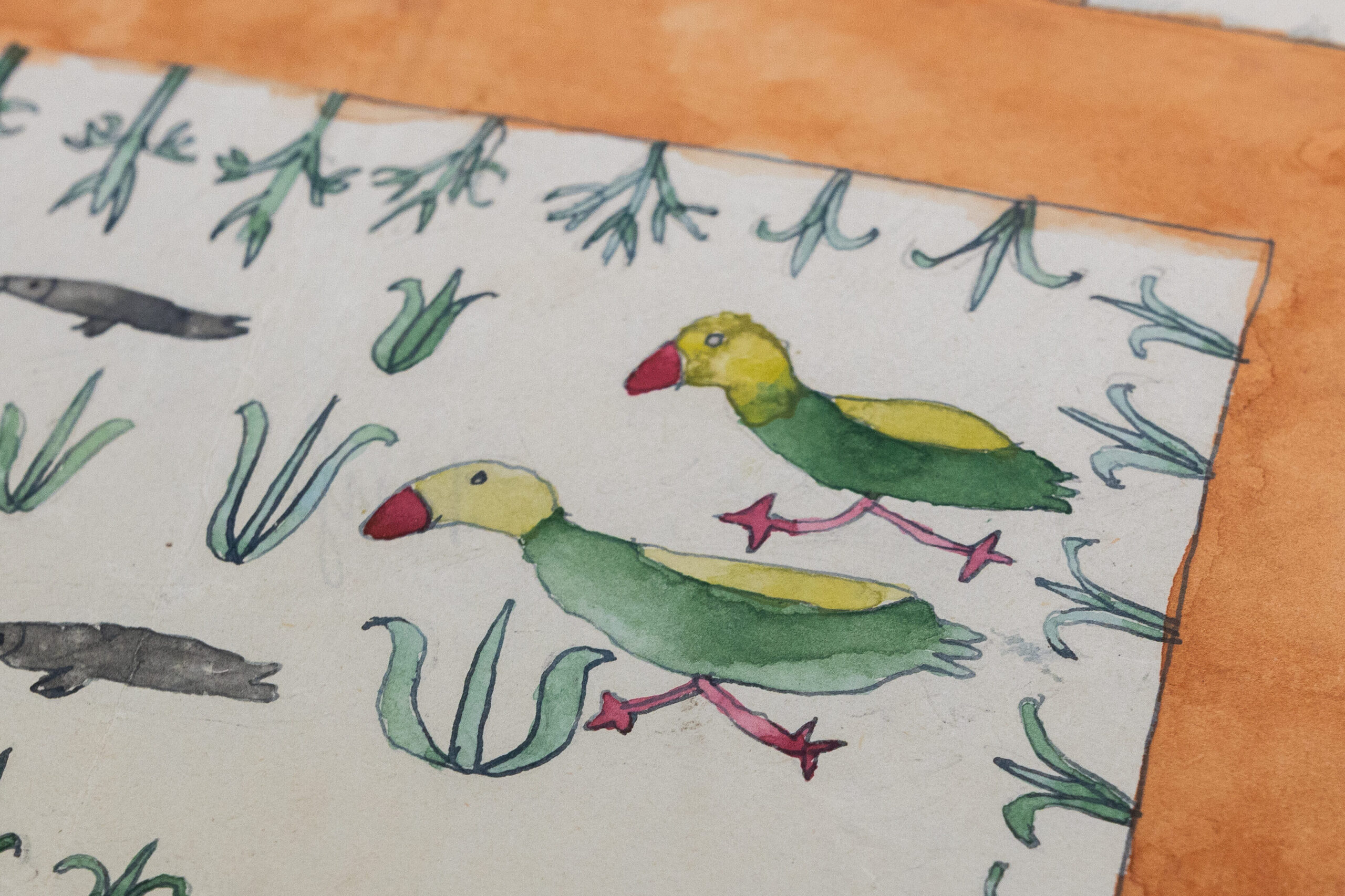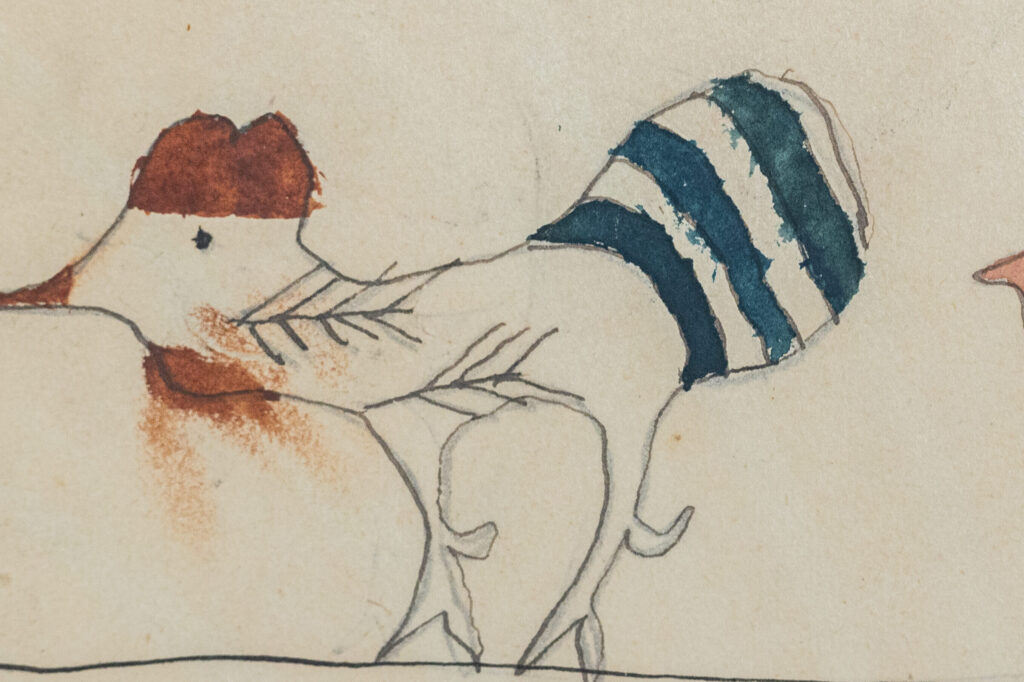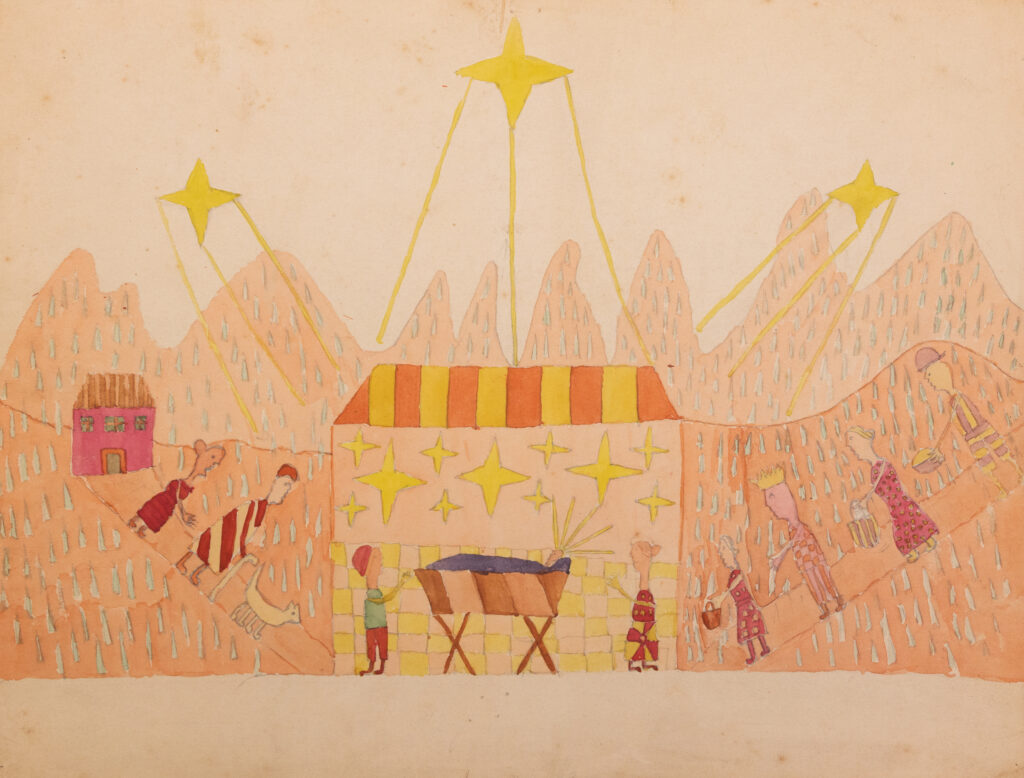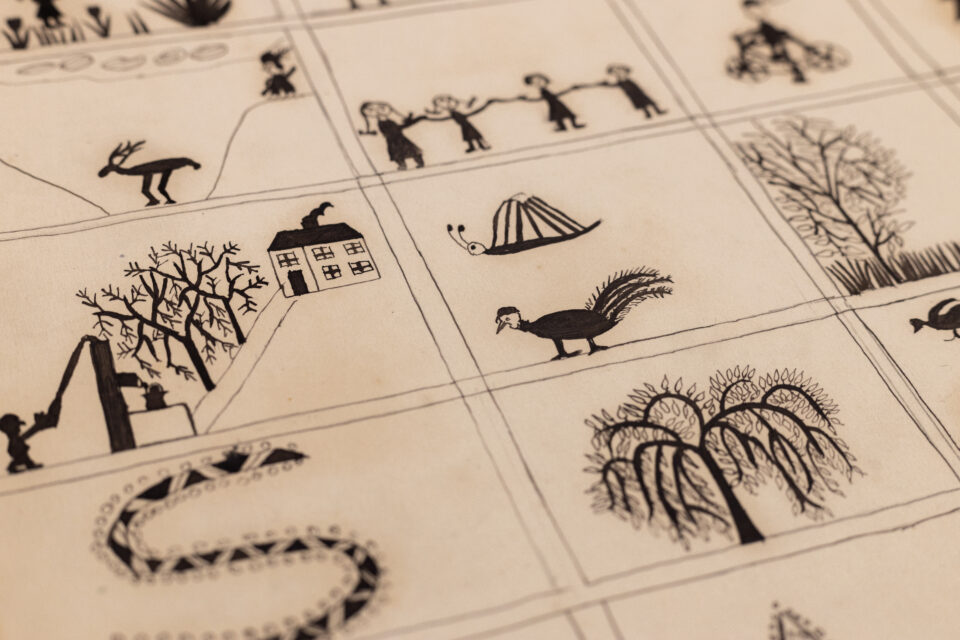
On April 17, 2025, UNESCO added the Daiber Collection of the School History Collection together with 17 new documentary heritage collections to its Memory of the World Register, bringing the total number of inscribed collections to 570.
The drawings
Drawings by ten-year-old children at school almost 100 years ago. A precious treasure has been hidden in the FAU’s school history collection for decades.
The drawings are of impressive quality and intensity: themes of the seasons, interior views of homes, animals, floral motifs and Christmas motifs, Christmas trees, farmers at work. One recognizes poverty, social hardship, the consequences of the First World War – the burdens of a childhood immediately after the First World War and shortly before the Nazi dictatorship. But the joy of life, sensitivity, hopes and inventiveness of the children are also visible.
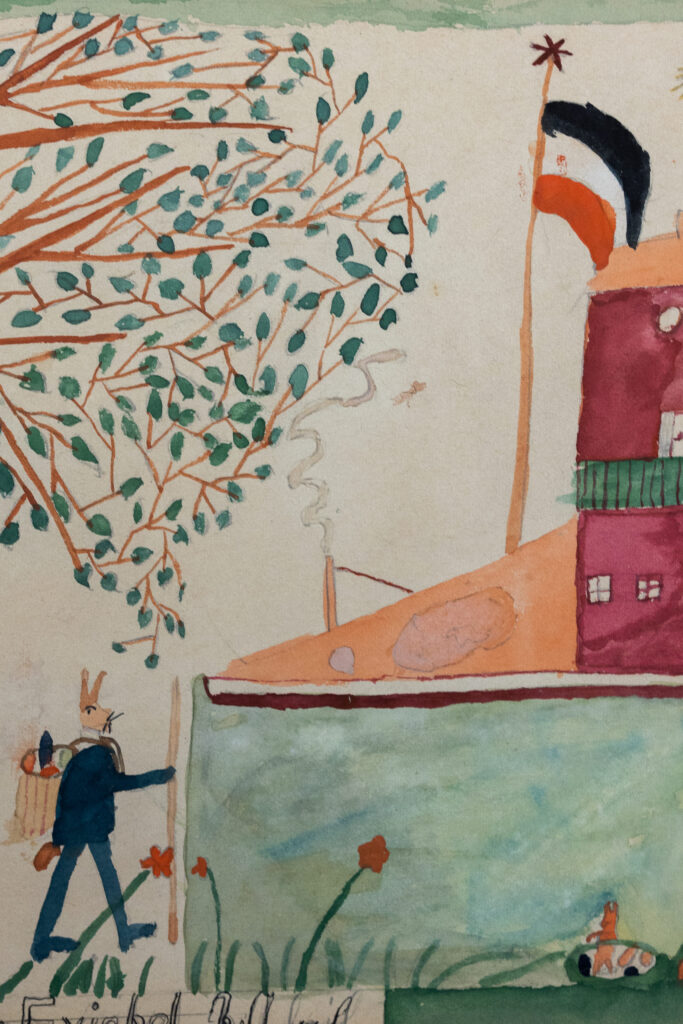
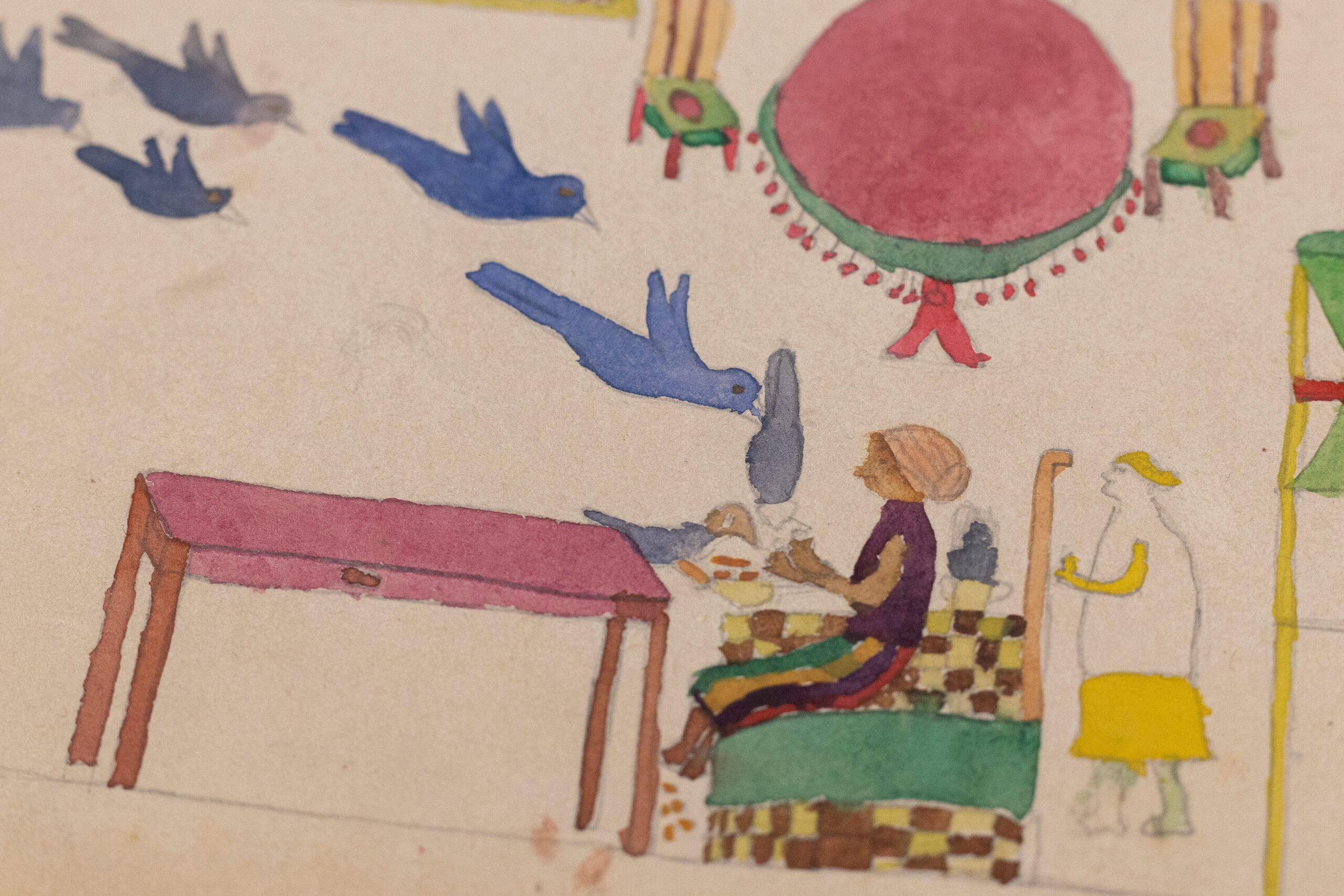
Easter bunnies with the flag of the German Empire and the fairy tale of Cinderella.
12-13 year old girls, 1925.
Access to the Daiber Collection database WissKI
The teacher
Wilhelm Daiber, a teacher at Stein elementary school in the 1920s, vowed to teach his pupils to draw and paint, and to do so with joy. He invested in expensive paints and good paper, encouraging the children to pursue their own interests, to find their own pace and sense of proportion. It is completely unimportant whether a cow or a flower or even Santa Claus look like they do in photos. The decisive factor for Daiber is that the children develop their own ideas, self-confidence, creativity and joy in observing things closely. Thousands of drawings are created.
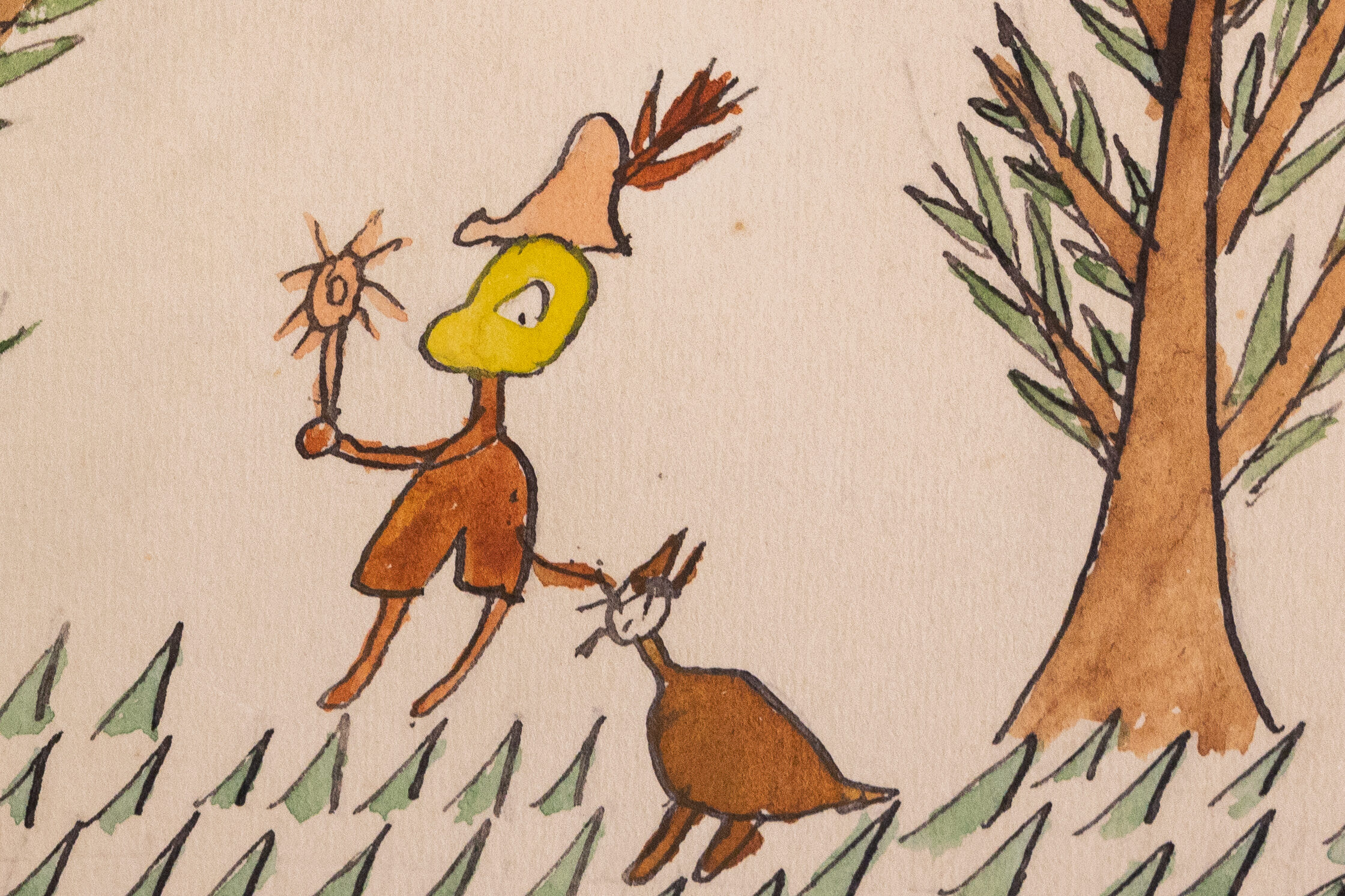
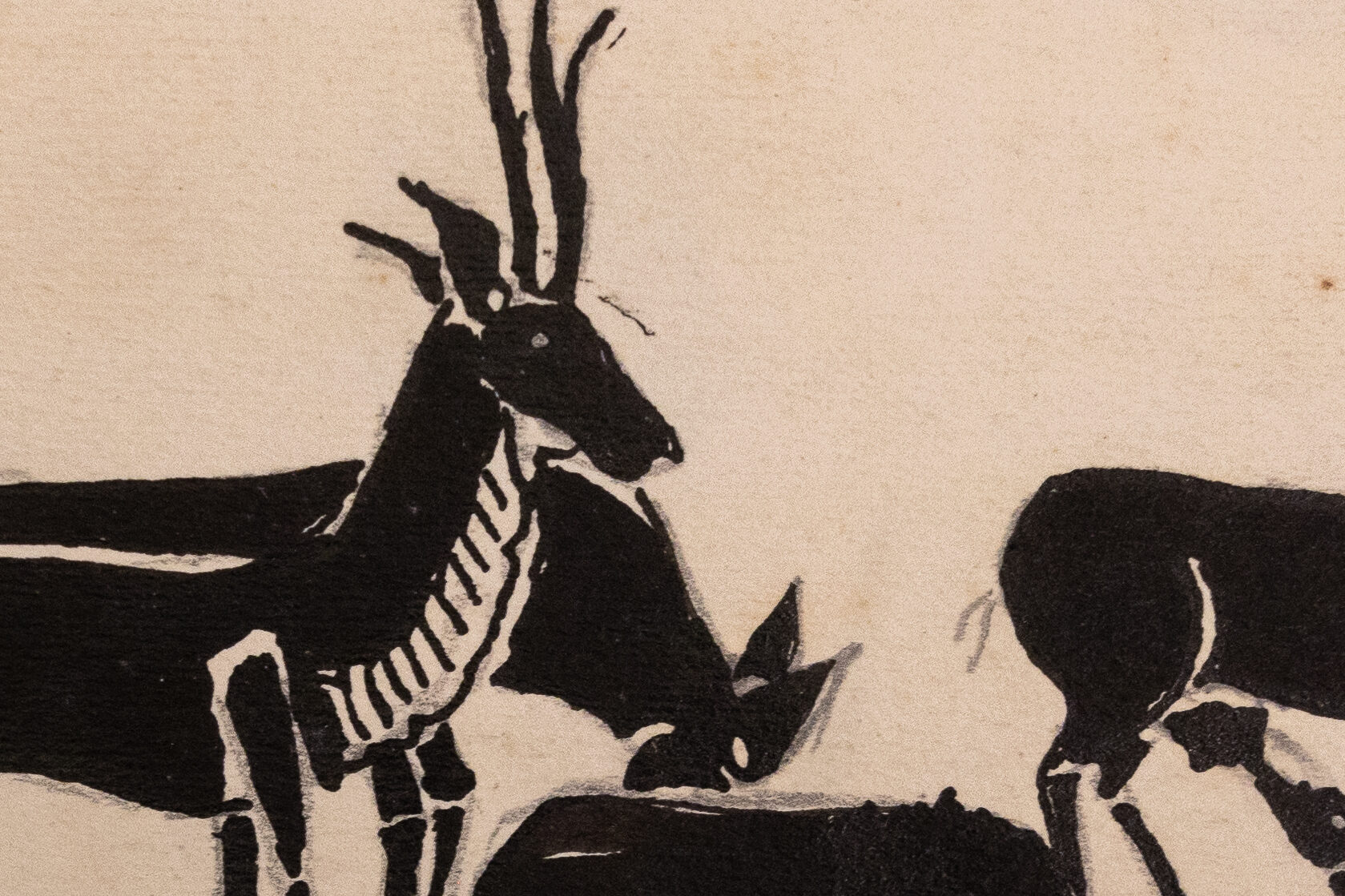
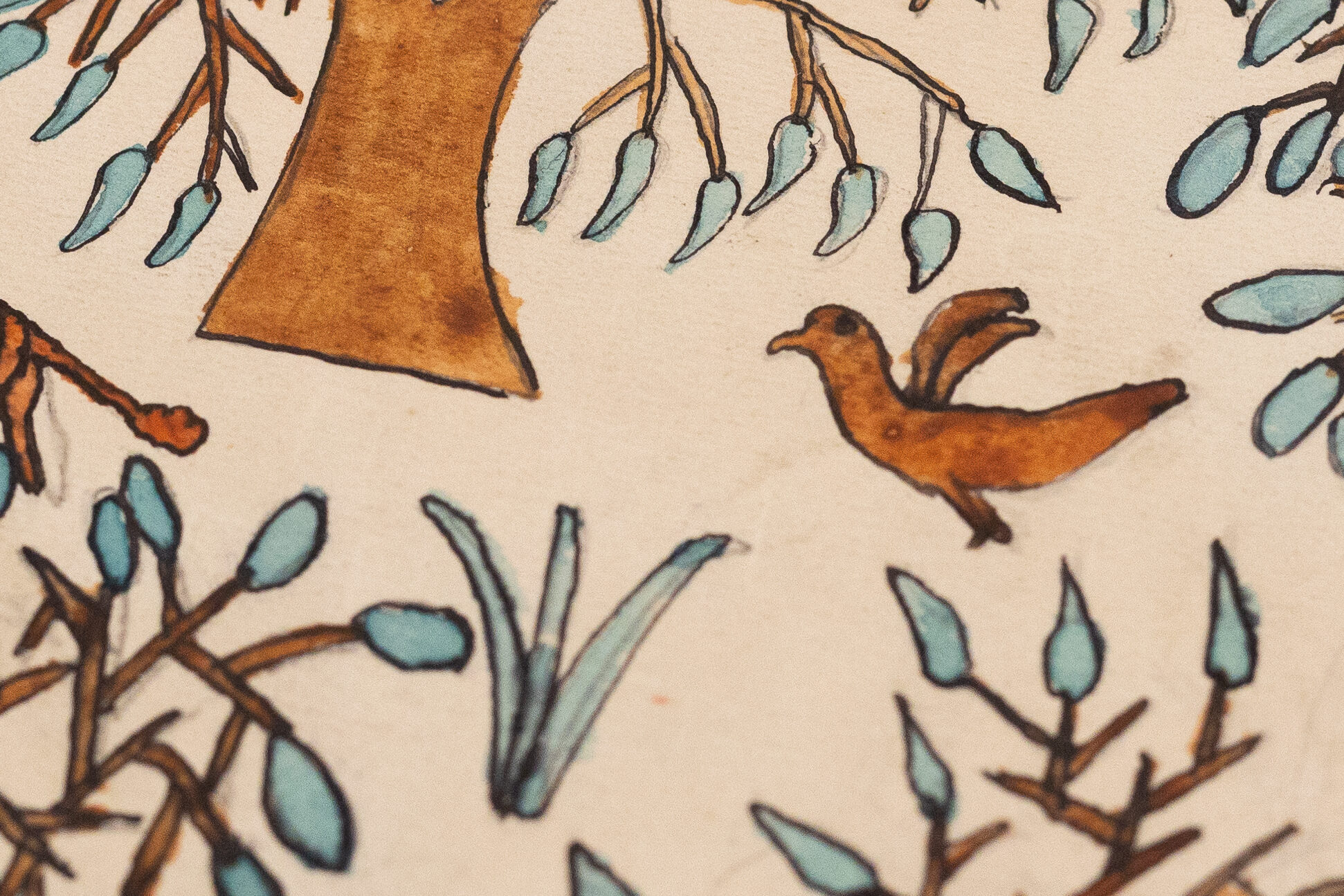
Image details of 8 to 14-year-old children, 1924-1928
The Researcher
At some point, Daiber begins to observe the children closely. He developed a special method with which he increased their creativity and concentration. At the end observation turns into research.
What is unique about Daiber’s approach is that he collects, labels, analyzes and publishes all the pictures. Over 4,500 drawings from the years 1924 to 1929 have been preserved.
Through his methods and publications, Wilhelm Daiber became a well-known follow and influence to the “Reformpädagogik” throughout Germany.
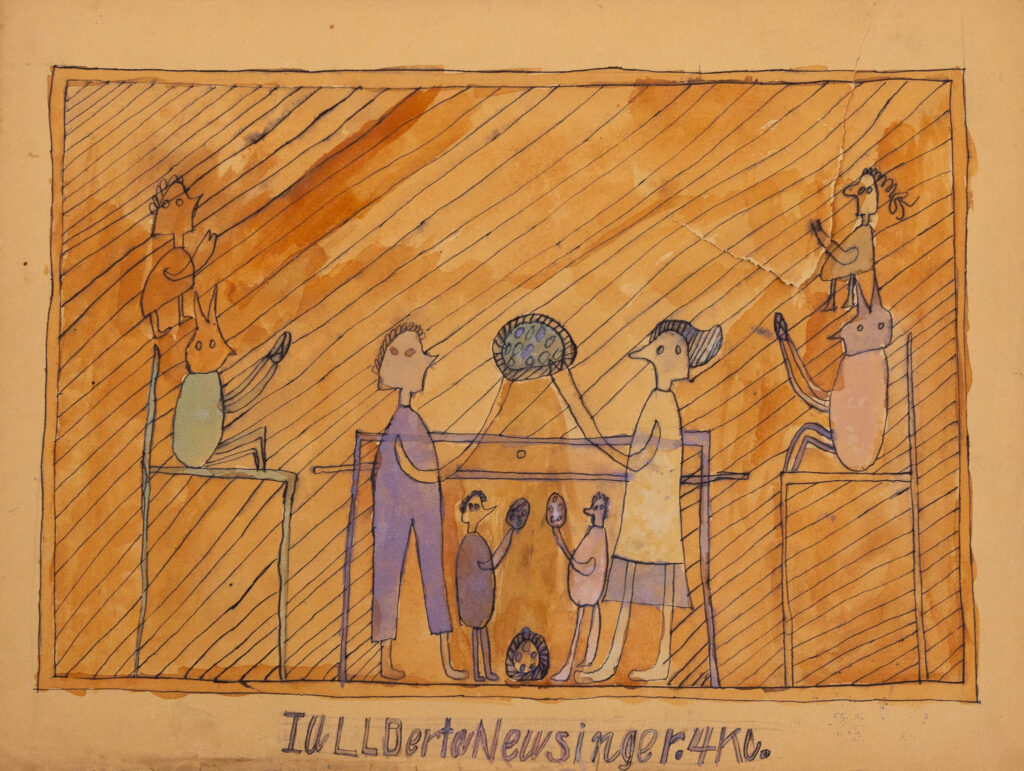
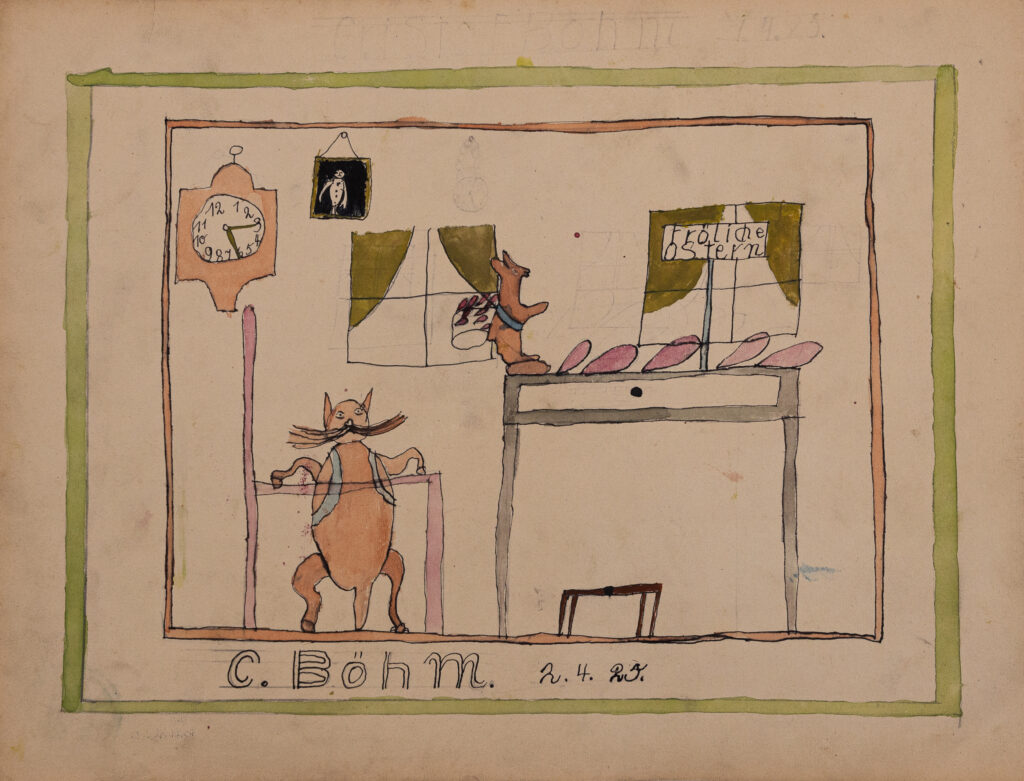
Poverty is reflected in the drawings in many different ways: The drawings of the two 10-year-old girls in 1925 show, on the one hand, simple home furnishings and, in the second case, signs of prosperity, e.g. a wall clock.
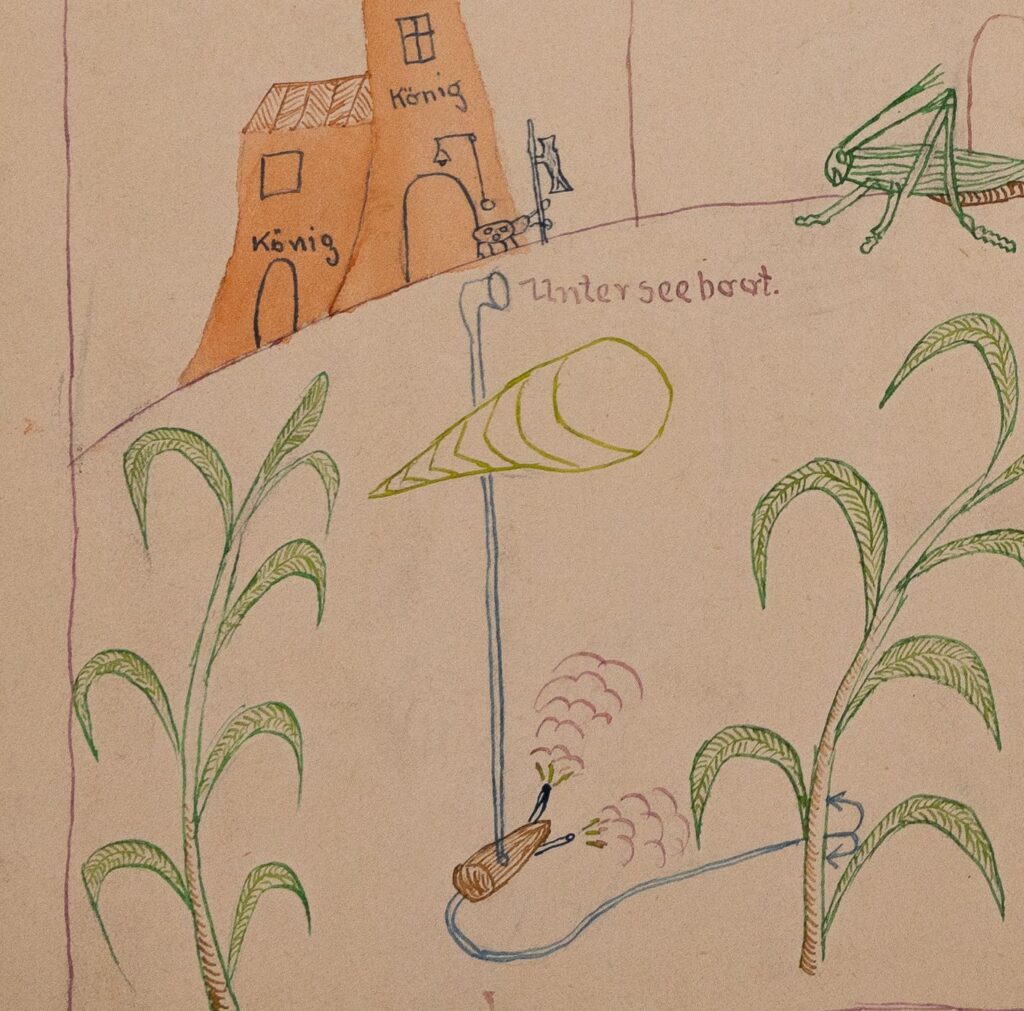
Traces of the First World War: a submarine in the middle of the landscape. 14-year-old boy, 1928
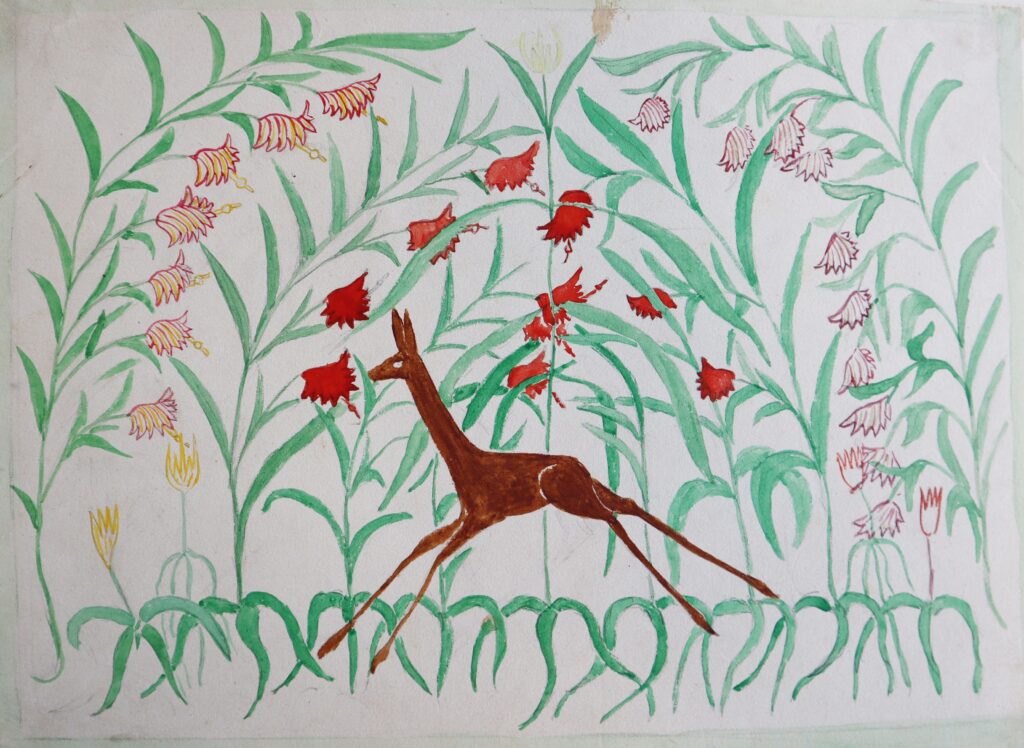
Deer in the forest. 14 year old girl, 1926 (Original in the archives of the Germanisches Nationalmuseum)
The Wilhelm Daiber collection is a unique treasure for historians (art and school history), teachers, folklorists and researchers. Daiber sorted the collections according to teaching days and classes and labeled them very carefully. In combination with the archiv collection stored at the Germanisches Nationalmuseum and other collections held by private individuals and in other archives, the result is a unique field of research of early childhood drawing, reform education in the 1920s and the perception of children’s everyday lives in the Weimar Republic in general.
Art historian Regina Reimer’s dissertation project deals with these more than 4,500 preserved children’s drawings made at the school lessons of the reform pedagogue Wilhelm Daiber, the didactics and pedagogy behind them and the historical context.
The collection is open for scientific research, but also for students and pupils:
School History Collection of the University of Erlangen Nuremberg
Regensburger Straße 160, 90478 Nuremberg.
Contact and appointments: schulmuseum@fau.de
